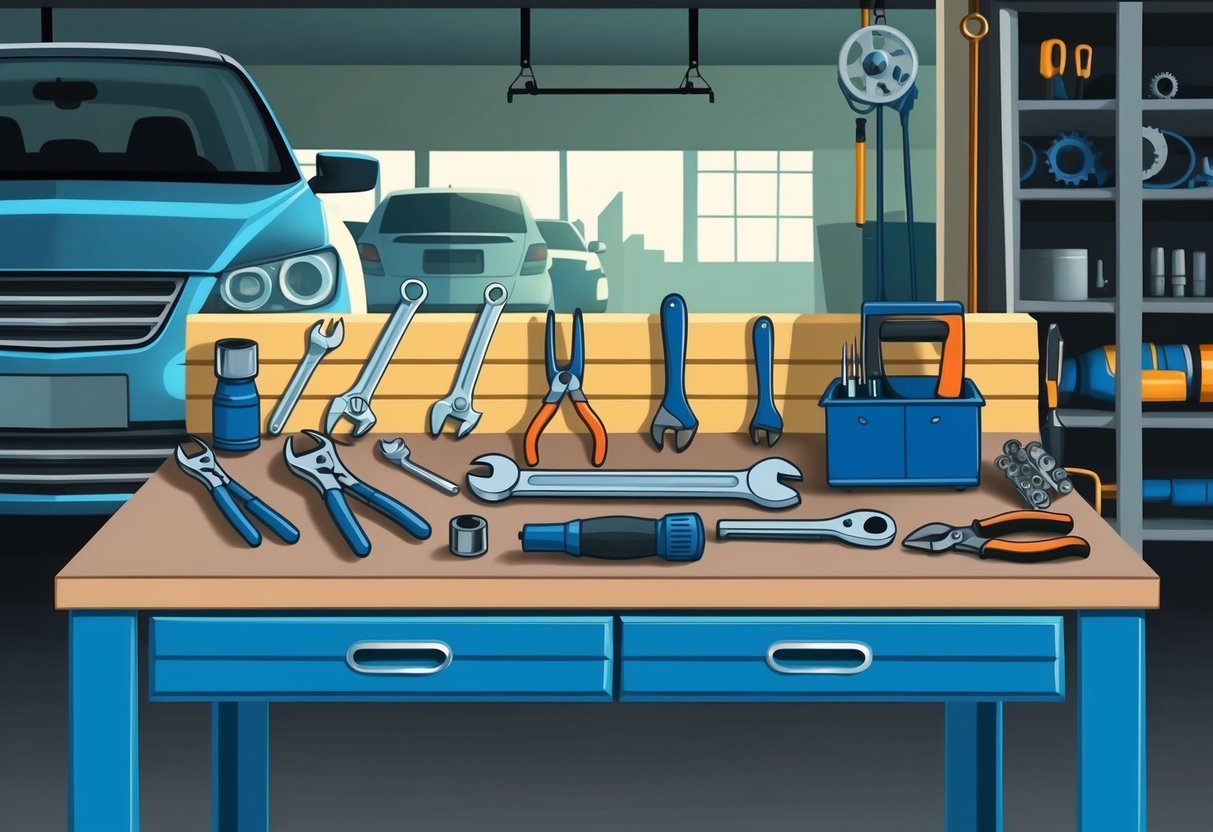
Diagnostic and Testing Essentials
For effective DIY auto repair, certain diagnostic and testing tools are crucial in pinpointing problems and preventing unnecessary part replacements. These tools help save both time and money by revealing exactly where issues exist in a vehicle’s systems.
Diagnostic Scanners
A reliable diagnostic scanner, often called an OBD-II reader, is one of the most important tools for any vehicle repair. These devices plug into a port beneath the car’s dashboard and quickly read error codes produced by the car’s onboard computer.
This allows a beginner to identify engine and electronic faults without guesswork. Modern OBD-II scanners can display live data such as engine temperature, RPM, sensor readings, and more.
Some models connect via Bluetooth to a smartphone, making them even easier to use. Scanners range from basic code readers to advanced models with graphing and freeze frame functions, helpful for deeper troubleshooting.
For a list of features to look for in a good scanner, check resources like this guide on automotive tools every mechanic needs.
Common Uses:
- Reading and clearing check engine light codes
- Monitoring real-time sensor data
- Checking readiness for vehicle emissions tests
Compression Testers
A compression tester is indispensable for diagnosing internal engine problems. It measures the amount of pressure generated by each cylinder during combustion, which is critical for identifying worn piston rings, damaged valves, or gasket failures.
Using a compression tester involves removing a spark plug and attaching the gauge to the cylinder. By cranking the engine, the gauge provides a pressure reading.
Low or inconsistent readings between cylinders can point to significant engine wear or specific problems that need further investigation. This allows car owners to distinguish between issues that can be repaired DIY and those requiring professional intervention.
Why Compression Matters:
- Identifies sources of poor performance, such as misfires or loss of power
- Confirms whether an engine issue is mechanical or electronic in nature
- Helps avoid unnecessary part replacement by locating the source of trouble
Cutting and Clamping Tools
Proper cutting and clamping tools are vital for any DIY car repair project. They make it possible to hold parts securely and ensure precise modifications, which reduces errors and improves safety.
Vices
A bench vice is a must-have for every beginner mechanic’s garage. It provides a strong and stable way to hold auto parts, pipes, or metal pieces firmly in place.
This tool is especially important during tasks such as sawing, filing, or drilling. A quality vice with durable jaws can handle different materials, making it easy to perform work like pressing bearings or shaping metal pipes.
There are several kinds of vices, but a basic bench-mounted type is usually enough for most car repair jobs. Mechanics often favor models made from cast iron for their strength.
For DIYers looking for affordable options, stores such as Harbor Freight Tools offer reliable bench vices at budget-friendly prices.
Key benefits of a vice:
- Steady grip for safer cutting or drilling
- Reduces movement to prevent mistakes
- Supports both heavy and light-duty work
- Modular jaw inserts for working with soft metals
When installing a bench vice, it is important to mount it securely on a stable surface to avoid accidents.
Clamps
Clamps are essential when gluing, welding, or holding panels and parts together in automotive projects. They come in a variety of forms, such as C-clamps, locking pliers, and spring clamps, and each type serves specific functions.
For sheet metal work, C-clamps deliver firm pressure without damaging the surface. Locking clamps, often called vise-grips, are especially useful because they can hold irregular or round shapes securely while other tasks like grinding or painting are performed.
Spring clamps provide quick, moderate holding force and are great for temporarily securing wires, hoses, or interior parts during repair or assembly. DIYers often benefit from having multiple sizes and styles of clamps on hand.
Budget-conscious mechanics can find various clamp options at retailers like Harbor Freight Tools, where quality and price often meet the needs of beginners.
A quick guide to clamp selection:
| Clamp Type | Best Use | Key Feature |
|---|---|---|
| C-Clamp | Holding panels/frames | Adjustable reach |
| Locking Clamp | Securing odd shapes, hands-free tasks | Self-locking jaws |
| Spring Clamp | Temporary holding, lightweight parts | Quick release |